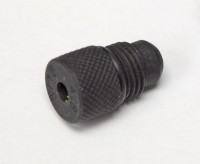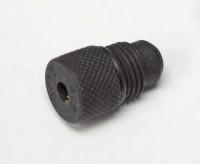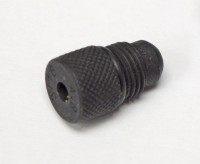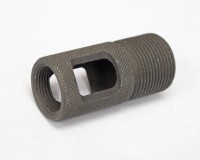KOVONASTROJE
-
Front riveting pliers 280mm with rivet collector, KN 4770610
 ! Sale !
! Sale !Profi Lever Rivet Rivet Cutter Length: 280 mm Rivet Gripper : Aluminum, Copper, Steel and Stainless Steel 4pcs Rivet Ends (2.4 - 3.2 - 4.0 - 4.8mm) Plastic Collecting Receptacle for Retaining Rivet Nails Pliers Made of Cr-Mo, Carbon Steel and PVC - -60 HRC Extensions: Black phosphate, heat treated
In stock9,66 € with VAT -
Side riveting pliers M3-M6 for rivet nuts 200mm in a plastic case, KN 4770619

Profi side riveting pliers for riveting nuts / nut rivets in plastic case Length: 200 mm For nuts M3, M4, M5, M6 For nuts: aluminum, measured, steel and stainless steel < br> Including: riveting adapters 4pcs Pliers are made of Cr-Mo material, carbon steel and PVC Using a rivet nut in a knurled joint, you create an intact thread to which you can easily attach other components. Procedure for riveting a nut into a sheet metal hole: 1) drill a suitable hole - the diameter and strength of the sheet metal is given on the bag with rivet nuts. 2) unfold the arms of the pliers and screw the thread onto the mandrel. nut(collar to pliers) 3) thread the nut on the mandrel into the hole, press vertically and press the arms of the pliers. 4) then open the arms and screw in the mandrel using the wheel, which you turn to the right. 5) Press the pliers arms repeatedly until the nut is firmly locked. 6) open the arms and turn the wheel to the left to unscrew the mandrel from the nut. By shortening, lengthening the cylindrical part of the pliers it is possible to change the transmission / control force to a small extent. When riveting the nuts, it is necessary to wait for the nuts with a feeling - there is a risk of the thread being torn out of the nut, or if the threaded part of the mandrel is torn off or if metal pliers mechanism . General - even when riveting, it is necessary to keep in mind that the force mechanism of the pliers must not be overturned = this can happen in a moment when the matrix is ??â € ‹â €‹ already completely loaded = no longer riveted! If you thread the nut in a place where it is not possible to check whether the nut is already completely tightened, or if you are starting and do not have a feeling yet, then We recommend that y
In stock29,50 € with VAT -
Side riveting pliers M3-M6 for rivet nuts 200mm, KN 4770620
 ! Sale !
! Sale !Profi side rivet nuts for rivet nuts / nuts Length: 200 mm For nuts M3, M4, M5, M6 For nuts: aluminum, copper, steel and stainless steel In : Rivet Adapters 4pcs Pliers Made of Cr-Mo, Carbon Steel and PVC How to rivet a nut in a sheet hole: 1) Drill a suitable hole - the diameter and the thickness of the sheet is shown on the rivet bag. 2) open the pliers of the pliers and screw the rivet on the thorn. nut (tongue collar) 3) Thread the nut on the mandrel into the hole, press it firmly and press the shoulder of the tongs. 4) Then open the arms and screw the thorn with the wheel you turn to the right. 5) Repeatedly press the arms of the pliers until the nut is firmly pushed. 6) open the shoulders and turn the knob to the left unscrew the thorn from the nut. Using the shortening, the extension of the cylindrical part of the pliers can be changed to a small extent by the transmission / control force. When nuts are riveted, it is necessary to clamp the nuts with a feel - threatening to pull the thread out of the nut or to tighten the threaded part of the mandrel or damage the lever mechanism of the pliers. General - When riving, it is necessary to think that the force mechanism of the tongs can not be pulled down - this can happen when the nut is completely nathleted = no longer irritating! If you drill the nuts in a place where it is not possible to verify that the nut is completely nozzle, or if you are starting and still not feeling, then we recommend first trying out what power is needed to tighten the nut or how many pliers it will take to completely nip sheet nuts. If these pliers are not available, you can buy the same Fortum pliers
In stock19,78 € with VAT -
Side riveting pliers M3-M6 for rivet nuts 200mm, KN 4770621
 ! Sale !
! Sale !Profi side rivet nuts for rivet nuts / nuts Length: 200 mm For nuts M3, M4, M5, M6 For nuts: aluminum, copper, steel and stainless steel In : Rivet Adapters 4pcs Pliers Made of Cr-Mo, Carbon Steel and PVC How to rivet a nut in a sheet hole: 1) Drill a suitable hole - the diameter and the thickness of the sheet is shown on the rivet bag. 2) open the pliers of the pliers and screw the rivet on the thorn. nut (tongue collar) 3) Thread the nut on the mandrel into the hole, press it firmly and press the shoulder of the tongs. 4) Then open the arms and screw the thorn with the wheel you turn to the right. 5) Repeatedly press the arms of the pliers until the nut is firmly pushed. 6) open the shoulders and turn the knob to the left unscrew the thorn from the nut. Using the shortening, the extension of the cylindrical part of the pliers can be changed to a small extent by the transmission / control force. When nuts are riveted, it is necessary to clamp the nuts with a feel - threatening to pull the thread out of the nut or to tighten the threaded part of the mandrel or damage the lever mechanism of the pliers. General - When riving, it is necessary to think that the force mechanism of the tongs can not be pulled down - this can happen when the nut is completely nathleted = no longer irritating! If you drill the nuts in a place where it is not possible to verify that the nut is completely nozzle, or if you are starting and still not feeling, then we recommend first trying out what power is needed to tighten the nut or how many pliers it will take to completely nip sheet nuts.
In stock22,91 € with VAT -
Front riveting pliers M3-M10 for rivet nuts 330mm, KN 4770632
 ! Sale !
! Sale !Profi lever rivet nuts for rivet nuts / nuts Length: 330 mm For nuts M3, M4, M5, M6, M8, M10 For nuts: aluminum, copper, steel and stainless steel Including: 6-Pin Rivet Adapters Pliers Made of Cr-Mo, Carbon Steel, and PVC How to rivet a nut in a sheet hole: 1) Drill a suitable hole - the diameter and the thickness of the sheet is shown on the rivet bag. 2) open the pliers of the pliers and screw the rivet on the thorn. nut (tongue collar) 3) Thread the nut on the mandrel into the hole, press it firmly and press the shoulder of the tongs. 4) Then open the arms and screw the thorn with the wheel you turn to the right. 5) Repeatedly press the arms of the pliers until the nut is firmly pushed. 6) open the shoulders and turn the knob to the left unscrew the thorn from the nut. Using the shortening, the extension of the cylindrical part of the pliers can be changed to a small extent by the transmission / control force. When nuts are riveted, it is necessary to clamp the nuts with a feel - threatening to pull the thread out of the nut or to tighten the threaded part of the mandrel or damage the lever mechanism of the pliers. General - When riving, it is necessary to think that the force mechanism of the tongs can not be pulled down - this can happen when the nut is completely nathleted = no longer irritating! If you drill the nuts in a place where it is not possible to verify that the nut is completely nozzle, or if you are starting and still not feeling, then we recommend first trying out what power is needed to tighten the nut or how many pliers it will take to completely nip sheet nuts. If these pliers are not available, you can buy the same Fortum pliers
In stock33,26 € with VAT -
Accordion riveting pliers for blind rivets, CN 4770677
 ! Sale !
! Sale !Pantograph / scissor riveting pliers Length: 250 mm / 825mm For rivets: 2.4 - 3.2 - 4.0 - 4.8 mm - 6.4 mm For rivets: aluminum, measured, steel and stainless steel 5 pcs of rivet ends(2.4 - 3.2 - 4.0 - 4,8 - 6,4mm) Plastic collection container for capturing torn-off nails Pliers are made of Cr-Mo material, carbon steel and PVC Parts individual: Jaws: Cr-Mo, hardened to 55-60 HRC Attachments: Black phosphate, heat treated
In stock12,79 € with VAT







